
- Subject:
- Social Science
- Material Type:
- Module
- Author:
- OpenStax College
- Date Added:
- 07/18/2021

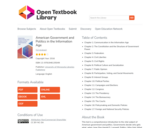
This text is a comprehensive introduction to the vital subject of American government and politics. Governments decide who gets what, when, how (See Harold D. Lasswell, Politics: Who Gets What, When, How, [New York: McGraw-Hill, 1936]); they make policies and pass laws that are binding on all a society’s members; they decide about taxation and spending, benefits and costs, even life and death.Governments possess power—the ability to gain compliance and to get people under their jurisdiction to obey them—and they may exercise their power by using the police and military to enforce their decisions. However, power need not involve the exercise of force or compulsion; people often obey because they think it is in their interest to do so, they have no reason to disobey, or they fear punishment. Above all, people obey their government because it has authority; its power is seen by people as rightfully held, as legitimate. People can grant their government legitimacy because they have been socialized to do so; because there are processes, such as elections, that enable them to choose and change their rulers; and because they believe that their governing institutions operate justly.Politics is the process by which leaders are selected and policy decisions are made and executed. It involves people and groups, both inside and outside of government, engaged in deliberation and debate, disagreement and conflict, cooperation and consensus, and power struggles.In covering American government and politics, this text introduces the intricacies of the Constitution, the complexities of federalism, the meanings of civil liberties, and the conflicts over civil rights;explains how people are socialized to politics, acquire and express opinions, and participate in political life; describes interest groups, political parties, and elections—the intermediaries that link people to government and politics; details the branches of government and how they operate; and shows how policies are made and affect people’s lives.
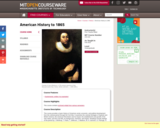
This course provides a basic history of American social, economic, and political development from the colonial period through the Civil War. It examines the colonial heritages of Spanish and British America; the American Revolution and its impact; the establishment and growth of the new nation; and the Civil War, its background, character, and impact. Readings include writings of the period by J. Winthrop, T. Paine, T. Jefferson, J. Madison, W. H. Garrison, G. Fitzhugh, H. B. Stowe, and A. Lincoln.
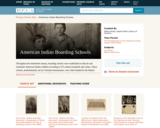
This collection uses primary sources to explore American Indian boarding schools. Digital Public Library of America Primary Source Sets are designed to help students develop their critical thinking skills and draw diverse material from libraries, archives, and museums across the United States. Each set includes an overview, ten to fifteen primary sources, links to related resources, and a teaching guide. These sets were created and reviewed by the teachers on the DPLA's Education Advisory Committee.
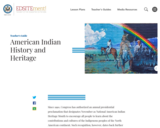
Edsitement Teacher guide on the teaching of American Indian HIstory and Heritage. Includes guiding questions sample lesson plans by grades, special considerations regarding teaching perspectives, and additional resources, materials.
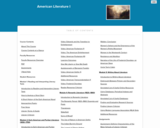
This course is a survey of American Literature from 1650 through 1820. It covers Early American and Puritan Literature, Enlightenment Literature, and Romantic Literature. It teaches in the context of American History and introduces the student to literary criticism and research.

In this class we will practice skills in reading, analyzing, and writing about fiction, poetry and drama from a select sampling of 20th Century American Literature. Through class discussion, close reading, and extensive writing practice, this course seeks to develop critical and analytical skills, preparing students for more advanced academic work.

This course studies the national literature of the United States since the early 19th century. It considers a range of texts - including, novels, essays, and poetry - and their efforts to define the notion of American identity. Readings usually include works by such authors as Nathaniel Hawthorne, Henry David Thoreau, Frederick Douglass, Emily Dickinson, and Toni Morrison.
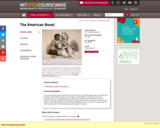
This course explores the metaphorical, historical, social, and psychological value of ghosts in the American novel. Using the theme of "haunting" as a flashpoint for class discussion and a thematic center for our readerly attention, this course examines the American novel in the context of the various histories which might be said to haunt fictional characters in the American novel, to haunt the American novel itself, and ultimately to haunt us: America's colonial past, its slave past, and other memorable and painful chapters in its past.
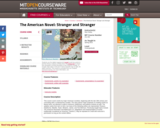
This course covers works by major American novelists, beginning with the late 18th century and concluding with a contemporary novelist. The class places major emphasis on reading novels as literary texts, but attention is paid to historical, intellectual, and political contexts as well. The syllabus varies from term to term, but many of the following writers are represented: Rowson, Hawthorne, Melville, Twain, Wharton, James, and Toni Morrison. Previously taught topics include The American Revolution and Makeovers (i.e. adaptations and reinterpretation of novels traditionally considered as American "Classics"). May be repeated for credit with instructor's permission so long as the content differs.
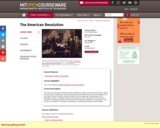
English and American backgrounds of the Revolution; issues and arguments in the Anglo-American conflict; colonial resistance and the beginnings of republicanism; the Revolutionary War; constitution writing for the states and nation; and effects of the American Revolution. Concerned primarily with the revolutionary origins of American government. Readings emphasize documents from the period -- pamphlets, correspondence, the minutes or resolutions of resistance organizations, constitutional documents and debates.
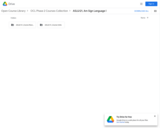
ASL I is an introduction to the naturally existing language widely used by Deaf people in North America. Since ASL is a visual-gestural language, students will need to develop unique communication skills. These consist of using the hands, body, face, eyes and space. In order to achieve progress in this class, it is important to become comfortable communicating with your whole body and listening with your eyes.

ASL II is a sequential course following ASL I, which continues to build knowledge of the naturally existing language widely used by Deaf people in North America. Since ASL is a visual-gestural language, students will need to continue to develop unique communication skills. These consist of using the hands, body, face, eyes and space. In order to achieve progress in this class, it is important to become comfortable communicating with your whole body and listening with your eyes.
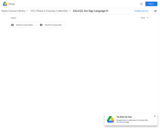
ASL III is the third quarter of the first year study of American Sign Language (ASL) and the people who use it. ASL III will enhance the use of ASL grammar and consist of concentrated efforts to develop the studentęs expressive and receptive skills. The course will continue to provide insights into Deaf Cultural values, attitudes and the Deaf community. Now learning more abstract concepts of the language, ASL III students will be able to: narrate events that occurred in the past, ask for solutions to everyday problems, tell about life events, and describe objects. Students will also be able to: demonstrate intermediate finger spelling competency, generate complex ASL structures with intermediate vocabulary knowledge, execute a wide variety of grammatical principles, including classifiers and inflections, adapt to different sign language registers, dialects and accents, and create opportunities to interact with members of the Deaf community.

This is a seminar course that explores the history of selected features of the physical environment of urban America. Among the features considered are parks, cemeteries, tenements, suburbs, zoos, skyscrapers, department stores, supermarkets, and amusement parks. The course gives students experience in working with primary documentation sources through its selection of readings and class discussions. Students then have the opportunity to apply this experience by researching their own historical questions and writing a term paper.
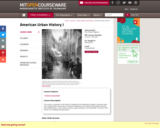
This course is a seminar on the history of institutions and institutional change in American cities from roughly 1850 to the present. Among the institutions to be looked at are political machines, police departments, courts, schools, prisons, public authorities, and universities. The focus of the course is on readings and discussions.

The decision of Britain's North American colonies to rebel against the Mother Country was an extremely risky one. In this unit, consisting of three lesson plans, students will learn about the diplomatic and military aspects of the American War for Independence.
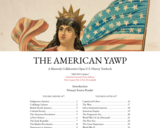
The American Yawp constructs a coherent and accessible narrative from all the best of recent historical scholarship. Without losing sight of politics and power, it incorporates transnational perspectives, integrates diverse voices, recovers narratives of resistance, and explores the complex process of cultural creation. It looks for America in crowded slave cabins, bustling markets, congested tenements, and marbled halls. It navigates between maternity wards, prisons, streets, bars, and boardrooms. Whitman’s America, like ours, cut across the narrow boundaries that strangle many narratives. Balancing academic rigor with popular readability, The American Yawp offers a multi-layered, democratic alternative to the American past.
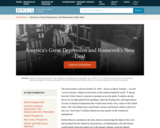
The stock market crash on October 29, 1929 -- known as Black Tuesday -- was the "worst economic collapse in the history of the modern industrial world." It spread from the United States to national economies across the globe. It ended a decade known for its high-spirited free-spending, called the Roaring 20s, and began almost 10 years of financial desperation that would touch nearly every citizen of the United States. The Great Depression caused bank closures and business failures and by its end, saw "more than 15 million Americans (one-quarter of the workforce)" unemployed. Herbert Hoover, president at the time, did not acknowledge the depth of the crisis and assumed that the American characteristics of individualism and self reliance would quickly bring the nation out of the disaster without a need for federal intervention. But, layoffs and financial desperation at the personal level were growing: "an empty pocket turned inside out was called a 'Hoover flag' [and] the decrepit shanty towns springing up around the country were called 'Hoovervilles'." Three years into the financial crisis, Franklin Delano Roosevelt, running on a platform of federal recovery programs called the "New Deal," easily took the presidential election of 1932.
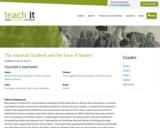
Uses primary sources to explore the impacts World War I had on the struggle for civil rights in Connecticut and America.